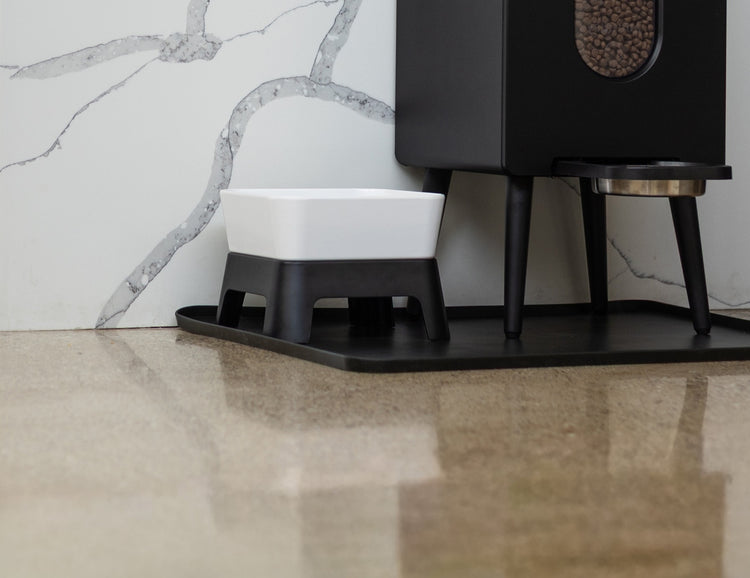How Long Should a Dog Pant After Exercise? Understanding Your Dog's Recovery Needs
- Houndsy
Table of Contents
- Introduction
- Understanding Panting: Why Do Dogs Pant?
- How Long Should a Dog Pant After Exercise?
- Tips for Helping Your Dog Cool Down After Exercise
- Recognizing Underlying Health Issues
- Conclusion
- FAQ
Introduction
As devoted pet owners, we often find ourselves captivated by the boundless energy and enthusiasm of our dogs during playtime or exercise. Did you know that a dog's panting can be a vital indicator of their health and well-being? According to veterinary experts, panting is a natural response for dogs, allowing them to cool down and regulate their body temperature. However, understanding the nuances of panting—especially after exercise—can be crucial for ensuring our furry friends' comfort and safety.
In this blog post, we will explore the factors that affect how long a dog should pant after exercise. We’ll delve into the physiological reasons behind panting, discuss the signs of normal versus excessive panting, and provide tips for helping our pets recover after physical activity. By the end, we aim to arm you with the knowledge to make informed decisions about your dog's post-exercise care, ensuring that their needs are met in a loving and responsible manner.
Our discussion will cover a range of topics, including:
- The physiological reasons dogs pant after exercise.
- The typical duration of panting in relation to exercise intensity and duration.
- Signs that indicate when panting might be excessive or a cause for concern.
- Recovery tips to help your dog cool down and rehydrate effectively.
So, let’s dive into this essential aspect of dog care and learn how we can better support our four-legged companions.
Understanding Panting: Why Do Dogs Pant?
Before we delve into the specifics of how long a dog should pant after exercise, it's essential to understand why dogs pant in the first place. Unlike humans, dogs do not sweat through their skin; instead, they rely on panting as a primary means of cooling down.
The Science of Panting
- Thermoregulation: Panting helps dogs regulate their body temperature. When a dog exercises, their body heat increases due to muscle activity. To cool down, they pant to evaporate moisture from their tongues and respiratory tracts, which helps bring their body temperature back to normal.
- Breathing Rate: A dog's resting breathing rate ranges from 10 to 30 breaths per minute, depending on their size and breed. During exercise, this rate can increase significantly. After exertion, panting allows for the rapid exchange of hot air for cooler air, aiding in temperature regulation.
- Excitement and Stress: In addition to temperature control, dogs may also pant when they are excited or stressed. This physiological response can occur during play, greeting their owners, or in response to anxiety-inducing situations such as thunderstorms or fireworks.
Factors Influencing Panting Duration
The duration and intensity of panting after exercise can vary based on several factors:
- Intensity of Exercise: More vigorous activities, such as running or playing fetch, will typically result in longer panting durations compared to light walks.
- Breed Characteristics: Some breeds, like Bulldogs and Pugs, may pant more heavily due to their brachycephalic (short-nosed) anatomy, which makes it harder for them to breathe efficiently.
- Temperature and Humidity: Hot and humid weather can exacerbate panting, causing dogs to require more time to cool down.
- Age and Health: Older dogs or those with underlying health issues may take longer to recover after exercise.
How Long Should a Dog Pant After Exercise?
As a general rule of thumb, dogs should return to their normal breathing rate within 10 to 30 minutes after exercise. However, the time it takes for a dog to stop panting can vary significantly depending on the factors discussed above.
Typical Recovery Times
- Mild Exercise: After a leisurely walk or light play, most dogs will pant for a few minutes but should return to normal within 5 to 10 minutes.
- Moderate Exercise: Following moderate activities, such as a game of fetch or a brisk walk, panting may last around 10 to 20 minutes. During this time, it's important to monitor your dog for signs of distress.
- Intense Exercise: For high-intensity workouts or long runs, panting can persist for 20 to 30 minutes or longer. In such cases, providing your dog with water and a cool environment is essential to aid their recovery.
Signs of Normal vs. Excessive Panting
While panting is normal post-exercise, it's crucial to differentiate between typical and excessive panting. Here are some indicators to help you assess your dog's condition:
- Normal Panting: Occurs following exercise, slows down gradually, and your dog appears relaxed and comfortable. They may also drink water during recovery.
- Excessive Panting: If your dog continues to pant heavily after 30 minutes of rest, seems disoriented, has a rapid heartbeat, or exhibits signs of distress (such as drooling, weakness, or pale gums), it's crucial to seek veterinary assistance immediately.
Tips for Helping Your Dog Cool Down After Exercise
As loving pet owners, we want to ensure our dogs recover comfortably after exercise. Here are some practical tips to help speed up the cooling-down process:
- Provide Water: Always have fresh, cool water available for your dog after exercise. However, avoid allowing them to gulp large amounts at once, as this can lead to stomach upset. Instead, offer small sips frequently.
- Gradual Cool Down: Just like we humans benefit from a cool-down period, dogs do too. Slow the pace of exercise towards the end, allowing them to transition from vigorous activity to a calm state. A gentle walk for a few minutes can facilitate this process.
- Create a Comfortable Environment: After exercise, bring your dog to a shaded area or an air-conditioned space. This will help them cool down more effectively.
- Cool Towels: Use damp, cool towels to wipe your dog's body, particularly around their neck and paws, to aid in cooling down.
- Monitor Temperature: If you're concerned about overheating, check your dog's body temperature. A normal temperature ranges from 101 to 102.5°F. If their temperature exceeds 103°F, you should take immediate action to cool them down and consult a veterinarian.
- Hydrate Gradually: Encourage your dog to drink small amounts of water to help with hydration, especially after intense exercise.
Recognizing Underlying Health Issues
As responsible pet owners, it's essential to be vigilant about our dogs' health. Excessive or prolonged panting can indicate underlying health issues. Here are some common conditions that could lead to abnormal panting:
- Heatstroke: A serious condition that occurs when a dog overheats. Symptoms include excessive panting, drooling, weakness, and potentially loss of consciousness. Immediate veterinary care is crucial.
- Heart Issues: Dogs with heart problems may pant excessively due to reduced oxygen circulation. Watch for additional signs such as coughing or lethargy.
- Respiratory Disorders: Conditions like pneumonia or laryngeal paralysis can cause heavy panting or labored breathing.
- Pain or Discomfort: Dogs may pant excessively in response to pain. If you notice your dog panting in unusual situations, look for other signs of distress, such as whining or reluctance to move.
If you have any concerns about your dog's health or notice unusual panting patterns, it's best to consult your veterinarian for professional advice and care.
Conclusion
In conclusion, understanding how long a dog should pant after exercise is vital for ensuring their well-being and safety. While panting is a natural and necessary response to exertion, pet owners must be aware of the signs of normal and excessive panting. By providing our dogs with appropriate care and monitoring their recovery, we can help them enjoy their post-exercise cooldown effectively.
As we reflect on our dogs' needs, consider how our innovative products, like the Houndsy Kibble Dispenser, can simplify the feeding process, allowing us more time to focus on our dogs' health and happiness. With our commitment to quality and design excellence, we strive to enhance the everyday experience of pet owners.
Explore the Houndsy Kibble Dispenser here to elevate your pet care routine.
FAQ
How can I tell if my dog's panting is normal?
Normal panting typically occurs after exercise and should subside within 10 to 30 minutes as your dog cools down. If the panting persists beyond this or is accompanied by signs of distress, it's essential to consult a veterinarian.
What should I do if my dog is panting excessively?
If your dog is panting heavily for more than 30 minutes after exercise or shows other concerning symptoms (like drooling, weakness, or disorientation), seek veterinary assistance immediately.
Are some breeds more prone to excessive panting?
Yes, brachycephalic breeds (such as Bulldogs and Pugs) are more prone to heavy panting due to their anatomical structure, which can affect their breathing efficiency.
Can panting be a sign of heatstroke?
Absolutely. Excessive panting, especially in hot weather, can indicate heatstroke. If you suspect heatstroke, it's critical to cool your dog down and seek veterinary care immediately.
How often should I exercise my dog?
The frequency and intensity of exercise depend on your dog's age, breed, and health. Generally, aim for at least 30 minutes to 2 hours of physical activity daily, broken into manageable sessions. Always adjust based on your dog's needs and condition.













